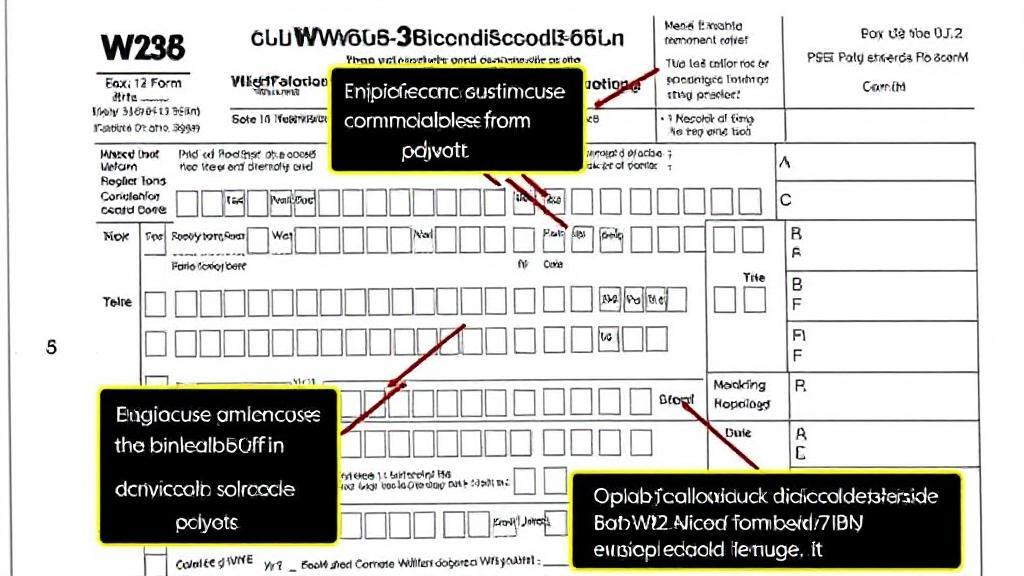Understanding Box 12 on the W-2 Form
When tax season arrives, one of the most important documents you'll receive is your W-2 form from your employer. Among its various sections, Box 12 often causes confusion due to its complex coding system. This box contains codes representing different types of compensation and benefits that may affect your tax calculations.
What is Box 12?
Box 12 reports special types of income, benefits, or deductions not included in your regular wages. Each entry contains a standardized code (letters A through HH) and corresponding amount that helps both you and the IRS understand the nature of the income or benefits reported.
Common Box 12 Codes
Retirement Plans
- Code D: Elective deferrals to a 401(k) plan
- Code E: Elective deferrals to a 403(b) plan
- Code G: Elective deferrals and employer contributions to a 457(b) plan
- Code AA: Roth 401(k) contributions
- Code BB: Roth 403(b) contributions
Health Benefits
- Code W: Employer contributions to Health Savings Account (HSA)
- Code DD: Cost of employer-sponsored health coverage
- Code FF: Permitted benefits under qualified small employer health reimbursement arrangement
Other Important Codes
- Code C: Taxable cost of group-term life insurance over $50,000
- Code J: Nontaxable sick pay
- Code L: Substantiated employee business expense reimbursements
- Code P: Excludable moving expense reimbursements for Armed Forces members
Note: While employer-sponsored health coverage costs (Code DD) must be reported, they are generally not taxable and are for informational purposes only.
How to Use Box 12 Codes
- Identify the Code: Look up the letter code to understand what it represents
- Report on Your Tax Return: Report amounts as required based on the code type
- Keep Documentation: Maintain records of amounts reported, especially for:
- Business expense reimbursements
- Moving expense reimbursements
- Healthcare-related contributions
Why These Codes Matter
Box 12 codes have significant implications for your tax situation:
- Tax Savings: Many retirement plan contributions can lower your taxable income
- Compliance: Proper reporting ensures compliance with tax laws
- Financial Planning: Understanding these codes helps with informed benefit decisions
Common Mistakes to Avoid
- Ignoring Box 12 codes when preparing taxes
- Misreporting amounts on your tax return
- Failing to keep supporting documentation
Resources for Further Information
For more detailed guidance, consult these resources:
- IRS Website's W-2 Instructions
- Social Security Administration's Employer W-2 Filing Instructions
- IRS Taxpayer Assistance Center
Tax Planning Tips
When reviewing your W-2's Box 12 codes, consider:
- Maximizing retirement contributions for the next tax year
- Understanding the tax implications of your benefits
- Consulting with a tax professional if you're unsure about specific codes
Remember that accurate reporting of Box 12 codes is crucial for avoiding delays, potential audits, or penalties. If you're uncertain about how to handle specific codes, consider using tax preparation software or consulting with a tax professional.
